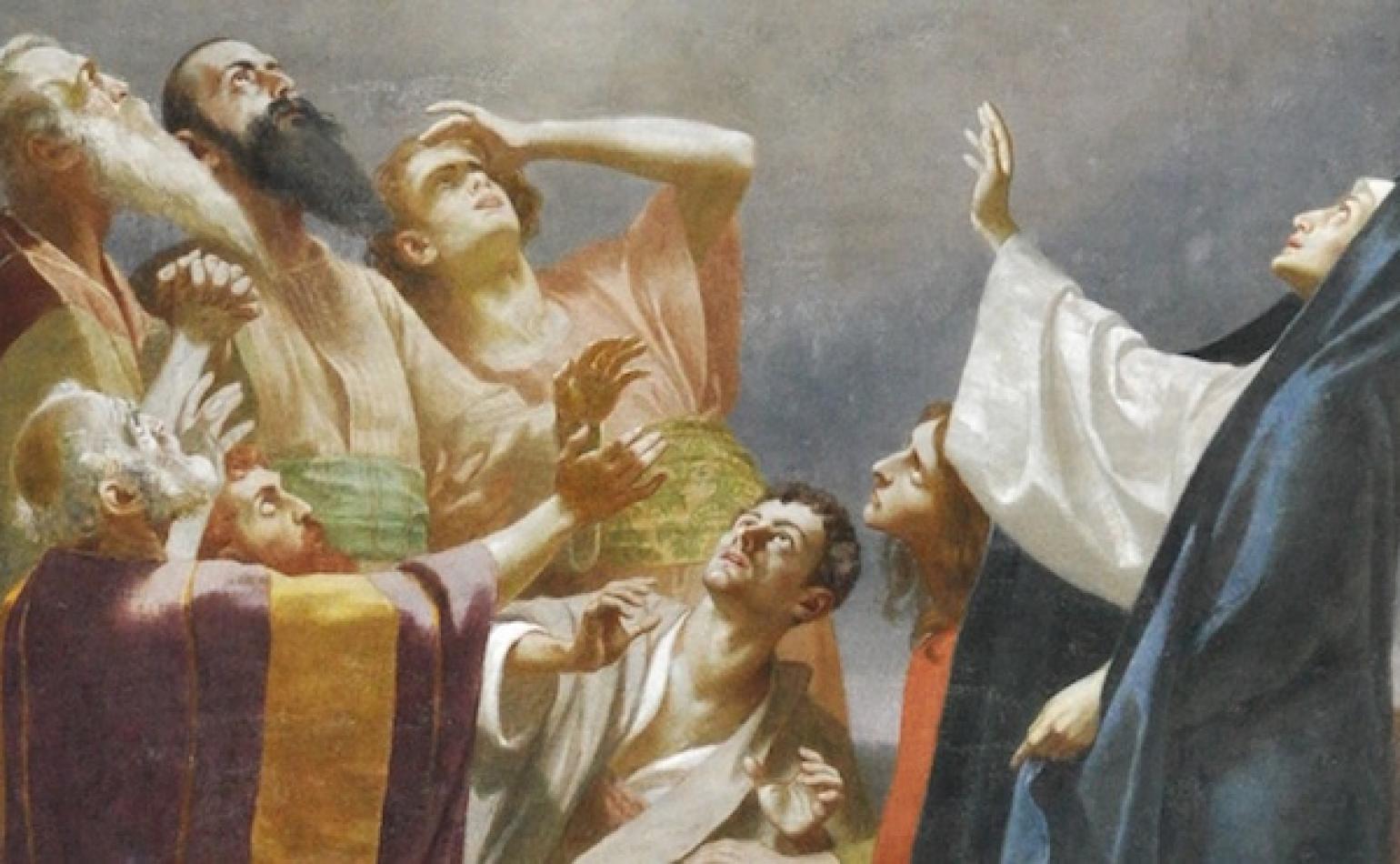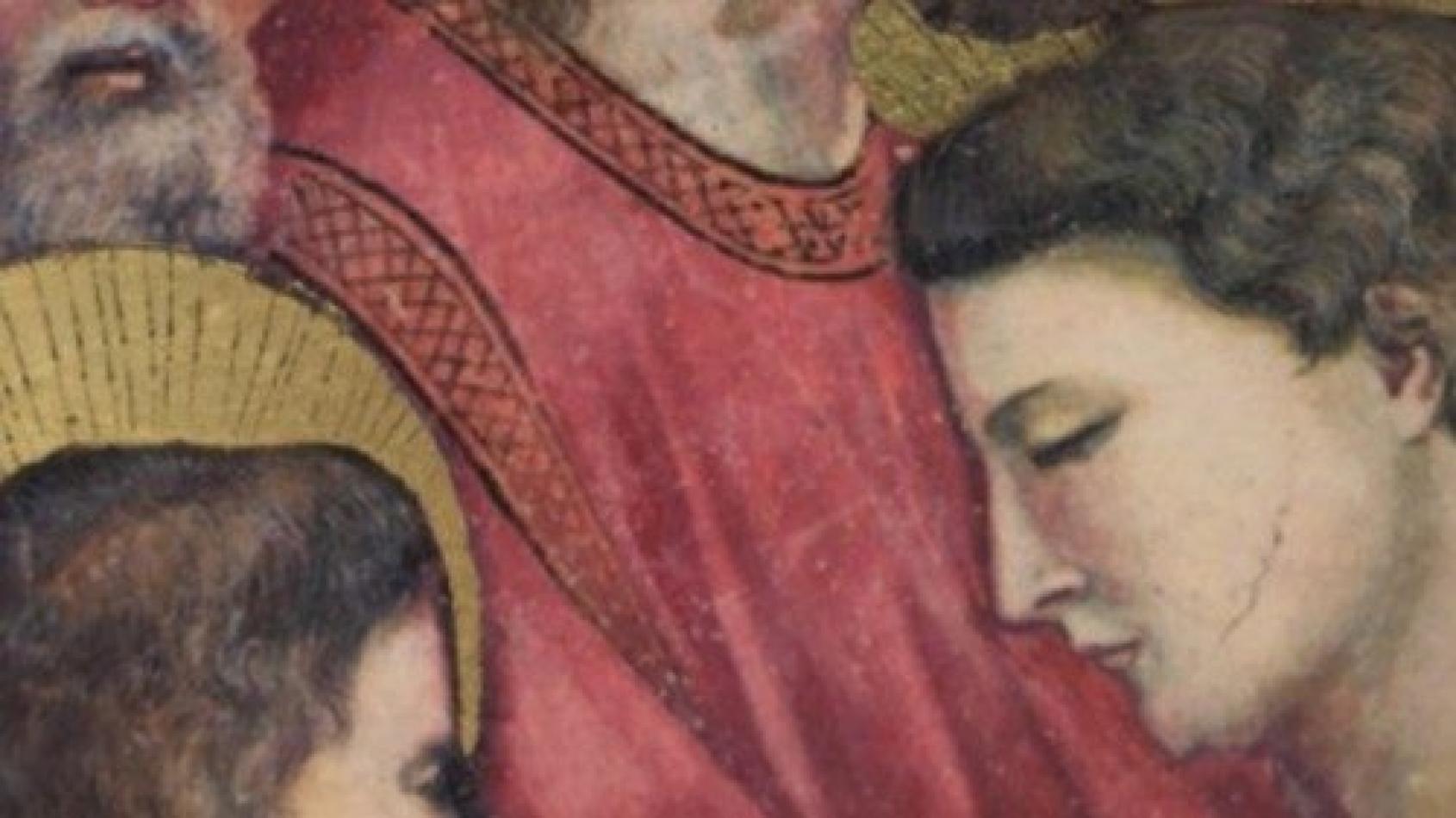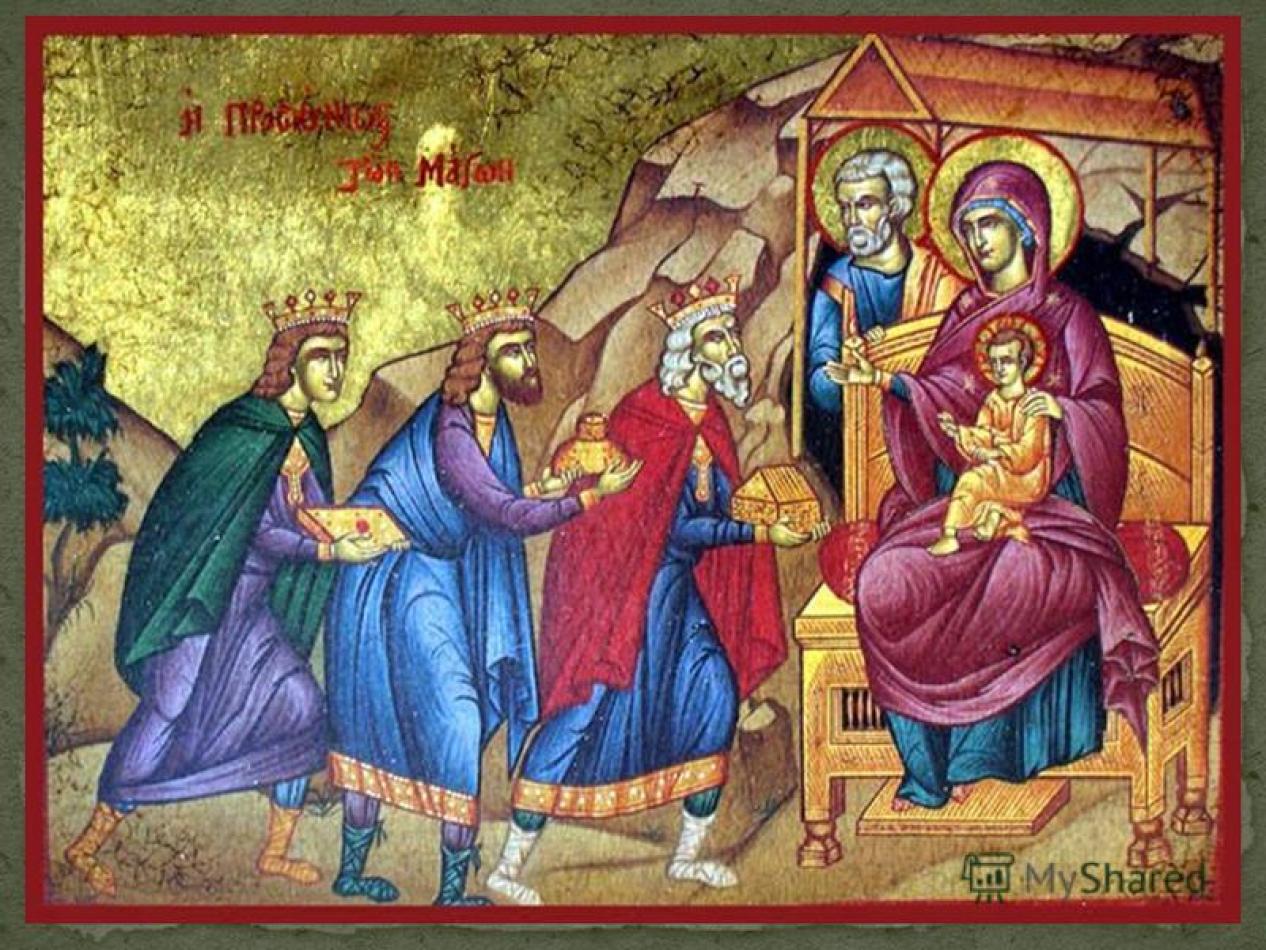Daniel Comboni
Comboni Missionaries
Institutional area
Other links
Newsletter
The Ascension concludes the symbolic forty-day period during which the Risen Lord appeared to His disciples: “After His suffering, He presented Himself alive to them by many convincing proofs, appearing to them over the course of forty days” (Acts 1:1–11, first reading). The “forty days” do not represent a chronological timeframe. In fact, in the Gospel — unlike the Acts of the Apostles — St Luke compresses the resurrection appearances and the Ascension into one single day, Easter Day, to emphasise that exaltation is inseparable from resurrection.
The Ascension:
A Feast of Farewell and Sending Forth!
“You are witnesses of these things.”
Luke 24:42–49
We are celebrating the Paschal mystery, which encompasses the five climactic moments of the Lord’s life: Passion, Death, Resurrection, Ascension, and Pentecost. The Ascension concludes the symbolic forty-day period during which the Risen Lord appeared to His disciples: “After His suffering, He presented Himself alive to them by many convincing proofs, appearing to them over the course of forty days” (Acts 1:1–11, first reading). The “forty days” do not represent a chronological timeframe. In fact, in the Gospel — unlike the Acts of the Apostles — St Luke compresses the resurrection appearances and the Ascension into one single day, Easter Day, to emphasise that exaltation is inseparable from resurrection. The periods he indicates — forty days to the Ascension and fifty days to Pentecost — are “theological times”, a literary refinement rich in biblical symbolism.
In many countries, this solemnity, which falls on the Thursday of the sixth week — 40 days after Easter — is moved to the following Sunday to allow for greater participation by the faithful.
The Ascension, the Cinderella of Christian Feasts?
The Feast of the Ascension was not celebrated until the 5th century. It was considered part and parcel of the glorification of the Risen Jesus (Philippians 2:9–11). Indeed, the Ascension is the other side of the Resurrection — the lifting up and exaltation of Christ.
The Waldensian pastor and theologian Paolo Ricca (+2024) wrote that the Ascension has become “the Cinderella of Christian feasts”. Indeed, it is a celebration that the Church has historically undervalued, perhaps because of the sorrowful aspect associated with Jesus’ definitive departure. However, it must be said that “this farewell has nothing of a goodbye: the sadness, like the old leaven, is swept away by Easter…; the Ascension leaves in the hearts of the apostles ‘great joy’. The anguish at the Lord’s departure took place chronologically before the Passion; then the disciples were sorrowful, like a woman whose hour has come (…) Here, the joy of seeing Him again at Easter is implied, and the Paschal joy is not disturbed by His ascent into heaven” (H.U. von Balthasar).
The Ascension brings us a joyful message of double presence. On one hand, the Lord Jesus, “lifted up into heaven”, still guarantees His presence on earth, among His own. St Augustine said: “Christ did not leave heaven when He came down to us, and He did not leave us when He ascended into heaven.” On the other hand, though we are still on earth, we are already with Him in heaven, where He — as “the great high priest in the house of God” — intercedes for us. Our true home is in God, but through the Incarnation, God’s dwelling place is now humanity. The Ascension reveals “the new and living way He opened for us through the curtain, that is, through His flesh” (Hebrews 10:20–21, second reading), and that Jesus is the true “ladder of Jacob” connecting heaven and earth (John 1:51).
The Ascension: A Feast of Mission
I would like to highlight the missionary dimension of the Ascension, which is not always sufficiently emphasised. Generally, we view Pentecost as the “feast of mission”, with the outpouring of the Spirit, the birth of the Church, and the beginning of apostolic preaching. This is all true. However, we must not overlook the fact that the missionary mandate is given on the day of the Ascension. Today, therefore, is the feast of the Church’s sending forth! The Ascension is both the culmination of Jesus’ earthly mission and the starting point of the Church’s mission. Jesus’ vertical movement into heaven corresponds to the Church’s horizontal movement into the world. Jesus completes His mission on earth and becomes “invisible” in order to give space, visibility, and responsibility to His disciples’ mission on earth.
Mission as Seen from the Ascension
Today’s Gospel passage from Luke offers some insights into mission:
-
The PURPOSE of mission: “In His name, repentance and forgiveness of sins will be preached to all nations.” It is striking that St Luke considers the call to repentance and the remission of sins as the two core aspects of mission. This contrasts with much of today’s cultural sensitivity. The challenge the Church faces is how to proclaim this dual message concretely as good news.
-
The RECIPIENTS, PLACES, and AGENTS of mission: The preaching is to be directed “to all nations”, i.e., everywhere; the mission knows no borders and excludes no one. But it begins “from Jerusalem” and moves outward — what Pope Francis likes to call a Church that goes forth. Jerusalem as the starting point ensures continuity — not without tensions (see the Council of Jerusalem in Acts 15) — between the old and the new Israel. The historical Jerusalem is the point of departure, but the heavenly Jerusalem is the final goal toward which mission journeys. The protagonists of the mission are not only the Eleven, but all disciples of Christ, as a community — for the sending is collective.
-
The MANNER of mission: “You are witnesses of these things.” The evangelist particularly stresses the missionary nature of witness. This witness is made possible by a new understanding of the Word: “Then He opened their minds to understand the Scriptures” (Luke 24:45), and by the power of the Spirit: “And now I am sending upon you what my Father promised; but stay in the city until you have been clothed with power from on high” (24:49). Joy and praise are the first forms of testimony: “Then they returned to Jerusalem with great joy, and they were continually in the temple blessing God” (24:52–53). These are well-known ideas, but how much do these fundamental dimensions of mission — the Word, the Spirit, Joy and Praise — weigh in our actual planning and activity?
-
Mission under the sign of BLESSING: “While He was blessing them, He withdrew from them and was carried up into heaven.” The final act of Jesus on earth is one of blessing. Mission takes place under this blessing, which is the source of praise and joy. Without it, we are easily tempted by grumbling, discouragement, and sadness — in other words, by a spirit of curse.
Mission Rekindles the Hope of Awaiting
According to the Acts of the Apostles, the two angels at the Ascension tell the apostles: “This Jesus, who has been taken up from you into heaven, will come in the same way as you saw Him go into heaven.” The Ascension carries with it the hope of Christ’s return to take us with Him.
One of the Church’s tasks in mission is to keep this hope alive and to help the Church keep the flame of faith burning as we await the return of the Bridegroom. Regarding Christ’s return, the Gospel poses one of its most unsettling questions: “But when the Son of Man comes, will He find faith on earth?” (Luke 18:8).
Fr Manuel João Pereira Correia, mccj
He is always beside every person
Introduction
With the coming of Jesus in the glory of the Father has anything on earth changed? Outwardly nothing. The lives of the people continued to be what it was before: to sow, reap, trade, build homes, travel, cry and party, as usual. Even the apostles had not received any reduction on dramas and anxieties experienced by other people. However, something incredibly new happened: a new light was projected on the existence of people.
On a foggy day, the sun suddenly appears. The mountains, the sea, the fields, the trees of the forest, the scent of the flowers, the songs of the birds remain the same, but the way of seeing or perceiving them is different. It also happens to one who is enlightened by faith in Jesus ascended into heaven: he sees the world with new eyes. Everything makes sense, nothing saddens; nothing more scares.
In addition to the fatality, the miseries, the errors of persons, the Lord who builds his reign is seen. An example of this completely new perspective could be the way to consider the years of life. We all know, and maybe we smile, of octogenarians who envy those who have fewer years than themselves. They are ashamed of their age. Well, they turn their gaze to the past, not to the future. The certainty of the Ascension reverses this perspective. While the years pass, the Christian is satisfied because he sees the days of the definitive encounter with Christ coming soon. He is happy to have lived, does not envy the young ones but looks at them with tenderness.
Gospel reflection – Luke 24: 46-53
We are able to study and learn about the material things, being able to apply intelligence and perspicacity. The secrets of God instead escape us; they are inscrutable; he alone can reveal them.
If we come to Jesus, if we retrace the steps of his life guided only by human wisdom we are faced with a deep mystery. We grope in the dark. From beginning to the end, what happens is a mystery. The same mother, Mary, is surprised and amazed when God’s plan begins to be implemented in the child (Lk 2:33.50). In faith, she has to “put together,” as anchors, various events (Lk 2:19) in order to discover the puzzle of the Lord. How to grasp its meaning?
This question the Risen One answers in the first verses of today’s Gospel (vv. 46-47). He—says Luke—opened the mind of the disciples to understand the Scriptures: “Thus it is written….” The light that illuminates the events of Easter can come only from the Word of God proclaimed by the prophet. In the Bible—Jesus says—it was already foretold that the Messiah would suffer, would die and rise again.
It is hard to find such explicit statement in the Old Testament. However, there is no doubt that what has changed the minds of the disciples and made them understand that the Messiah of God was very different from what they had expected. The texts of the prophet Isaiah speak of the Servant of the Lord as “despised and rejected, a man of sorrow and familiar with grief … he will live long and see his descendants…. For the anguish he suffered, he will see the light” (Is 53:3, 10-11).
Another event—says the Risen One—is announced in Scripture: “Repentance and forgiveness in his name would be proclaimed to all the nations” (v. 47). Hence the reference to the biblical text is clear. It alludes to the mission of the Servant of the Lord: “I will make you the light of the nations that my salvation will reach to the ends of the earth” (Is 49:6).
According to the prophet, it is the duty of the Messiah to bring salvation to all nations. How will this prophecy come about if Jesus limited his activities to his people if he offered salvation only to the Israelites (Mt 15:24)?
In the second part of today’s Gospel (vv. 48-49), he answers this question: Jesus will become “light of the people” through the witness of his disciples. It is a task too superior to human capabilities. To carry out the mission of Christ good will and good quality are not enough. One needs to rely on his own strength. That is the reason for the promise: “So remain in the city until you are clothed with power from above” (v. 49).
It is the announcement of the sending of the Spirit, the One who will become the star of the age of the Church. In the Acts of the Apostles, its presence in key moments and its assistance in the decisive choices made by the disciples will be often remembered.
Luke’s Gospel ends with the story of the Ascension (vv. 50-53). Before entering the glory of the Father, Jesus blesses the disciples (v. 51). At the end of the liturgical celebrations in the temple, the priest came out of the holy place and pronounced a solemn blessing on the faithful gathered for prayer (Sir 50:20). After the blessing they returned to their jobs, confident that the Lord would bring to fruition all their efforts and all their hard work. The blessing of Jesus accompanies the community of his disciples and it is the promise and guarantee of the full success of the work, which is about to begin.
The final appeal could only be but to rejoice: the disciples “returned to Jerusalem full of joy” (v. 52). Luke is the evangelist of joy. Already on the first page of his Gospel, we read of the angel of the Lord who says to Zacharias: “He will bring joy and gladness to you, and many will rejoice at his birth” (Lk 1:14). Shortly after, in the story of Jesus’ birth, the angel again appears who says to the shepherds: “Do not be afraid. I am here to give you good news, great joy for all the people” (Lk 2:10).
The first reason why the disciples rejoice, despite not having the Master visibly present with them, is the fact that they understood that he is not, as his enemies thought, a prisoner of death.
They have had the experience of his resurrection; they are certain that he crossed first the “veil of the temple” that separated the world of people from that of God. So he showed that everything that happens on earth: successes and mishaps, injustices, suffering and even the most absurd events, such as those that have happened to him, do not escape God’s plan. If this is the destiny of every person, death no longer causes fear; Jesus transformed it into a birth to life with God. This is the first reason to deal with hope even the most dramatic and complicated situations.
The light of the Scriptures made them understand that Jesus did not go to another place, has not strayed, but remained with the people. His way of being present is no longer the same but is no less real. Before Easter, he was conditioned by all the limitations to which we are subject. Not anymore and he can be close to every person, always. With the Ascension, his presence has not diminished; it has increased! Here is the second reason for the joy of the disciples and ours.
Fernando Armellini
Italian missionary and biblical scholar
https://sundaycommentaries.wordpress.com




